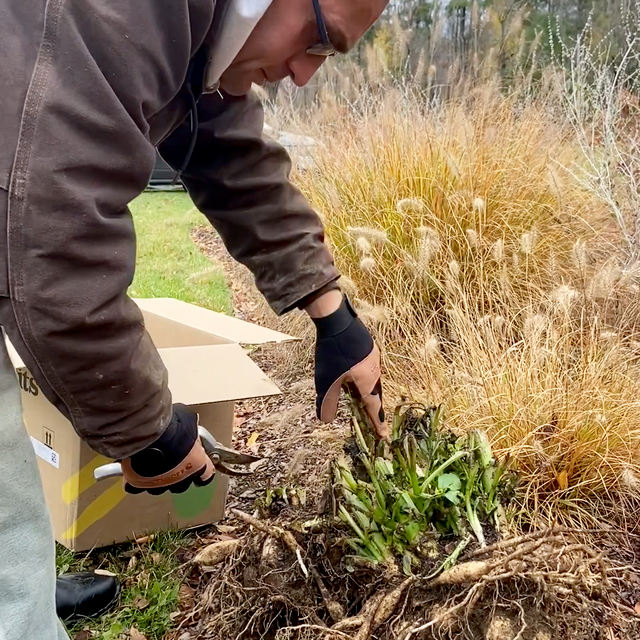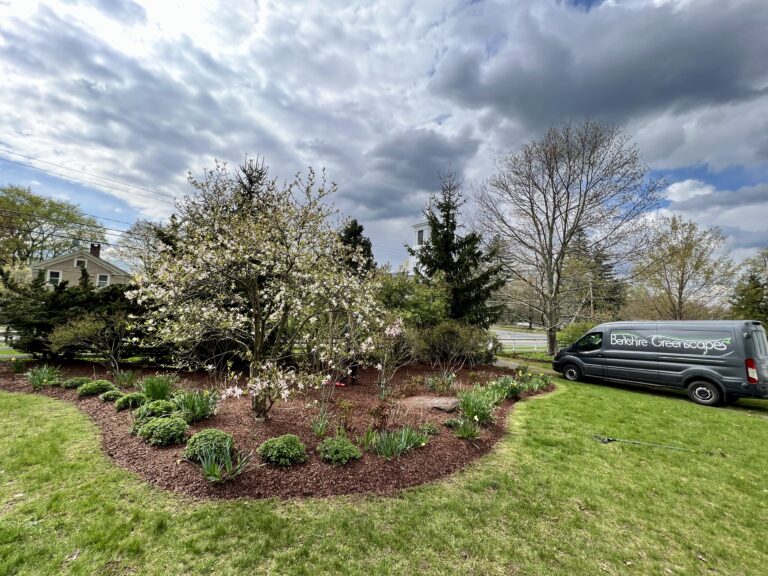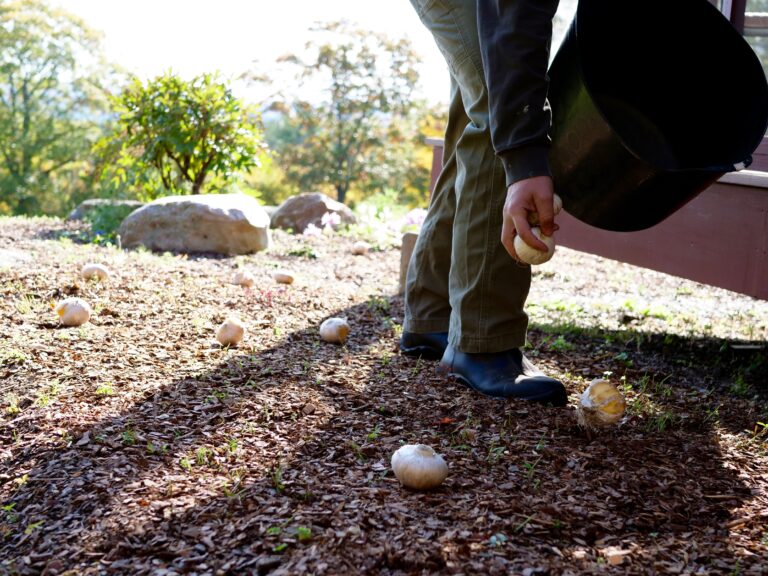First of All, HAPPY SPRING!
We are a little late on that… we know. Springtime always takes us by storm—sometimes literally! We have been SO busy pruning and cleaning things up, that when we looked up it was mid-April already. And while things in the Berkshires are looking to be getting an early start budding & blooming—have no fear—there is still time to prune!
What is Pruning & Why Do it?
Pruning is the strategic cutting back and removal of select branches, stems, or parts of a plant or tree for a desired beneficial effect. Done correctly, it promotes the health and production of the plant—yielding more fruit and/or flowers that last longer.
Berkshire Greenscapes, and many other serious gardeners, also prune for aesthetics. Shrubs and trees can easily go a little crazy when left untamed, taking over a space or changing shape for a more disheveled look… NOT what we are going for!
Benefits of Pruning Include:
- Safety First! Protect yourself from dead or loose branches prone to falling in the wind.
- More Fruit, More Flowers! Pruning stimulates growth & production for a lusher product.
- A Good-Lookin' Garden! Maintain an aesthetically pleasing garden or orchard.
Now, HOW Do You Prune?
We’ll show you! Let’s get started with some pruning basics, like when to prune, what you need, and how to make the cuts.
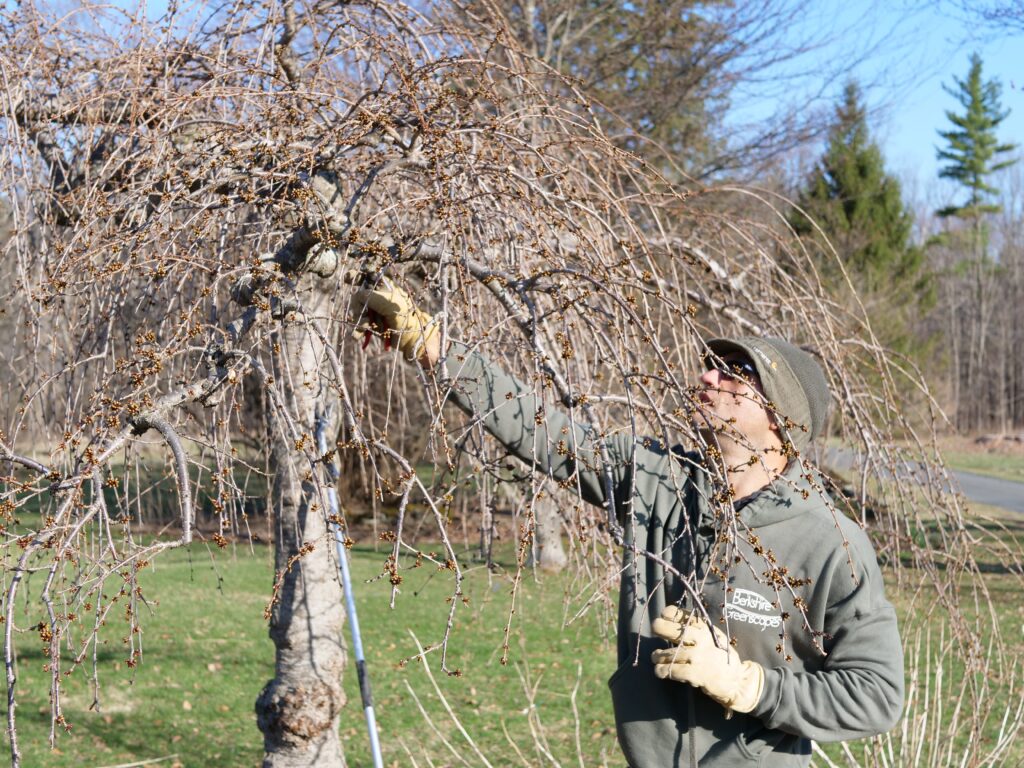
When to prune?
- You can start pruning in the early, early Spring, and need not be afraid to prune all the way to bloom time.
Really?! Pruning when it’s blooming?
- If you want to! It won’t hurt the tree, and in fact you can enjoy some of the flowering branches as floral arrangements.
What about pruning in the winter?
- You certainly prune when it is still wintery, just before spring. Many people prefer this as the tree is dormant at this time, and it is easy to heal from pruning cuts.
What Do You Need to Prune?
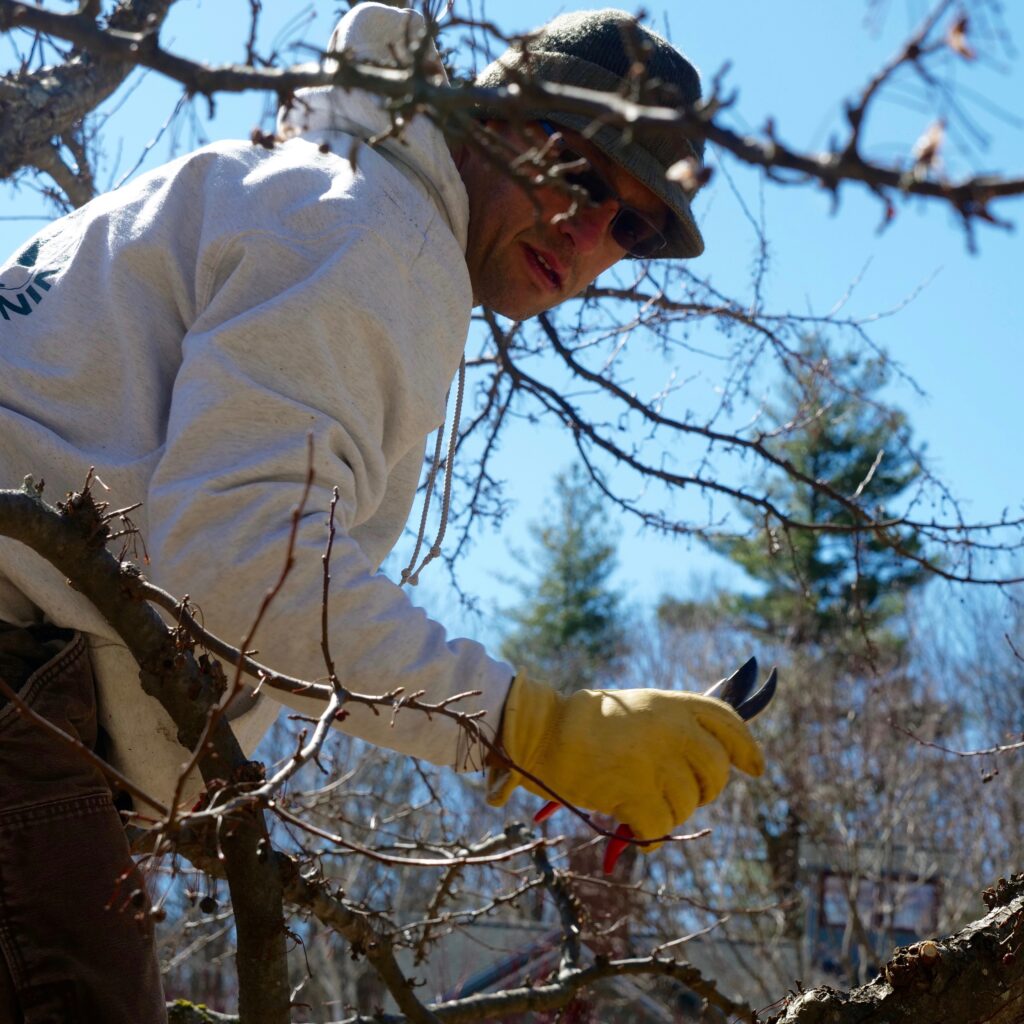
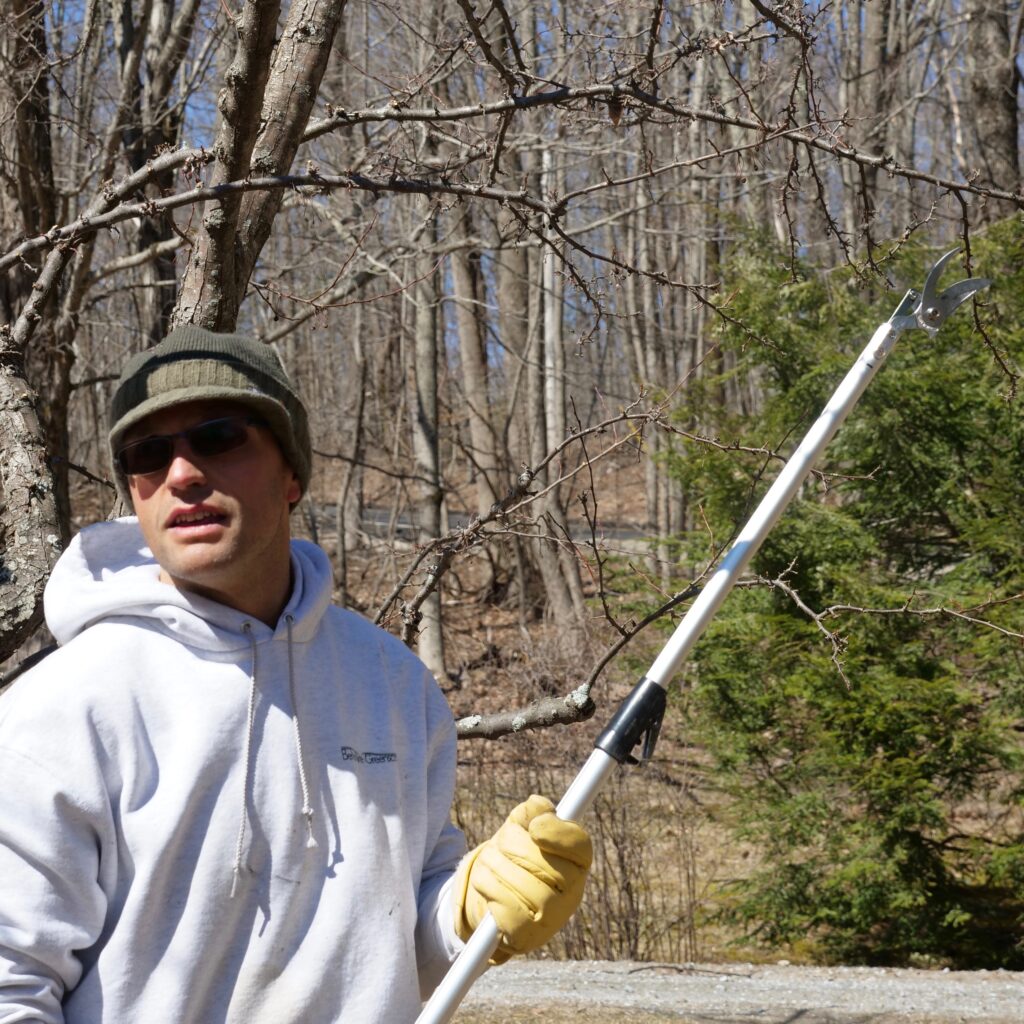
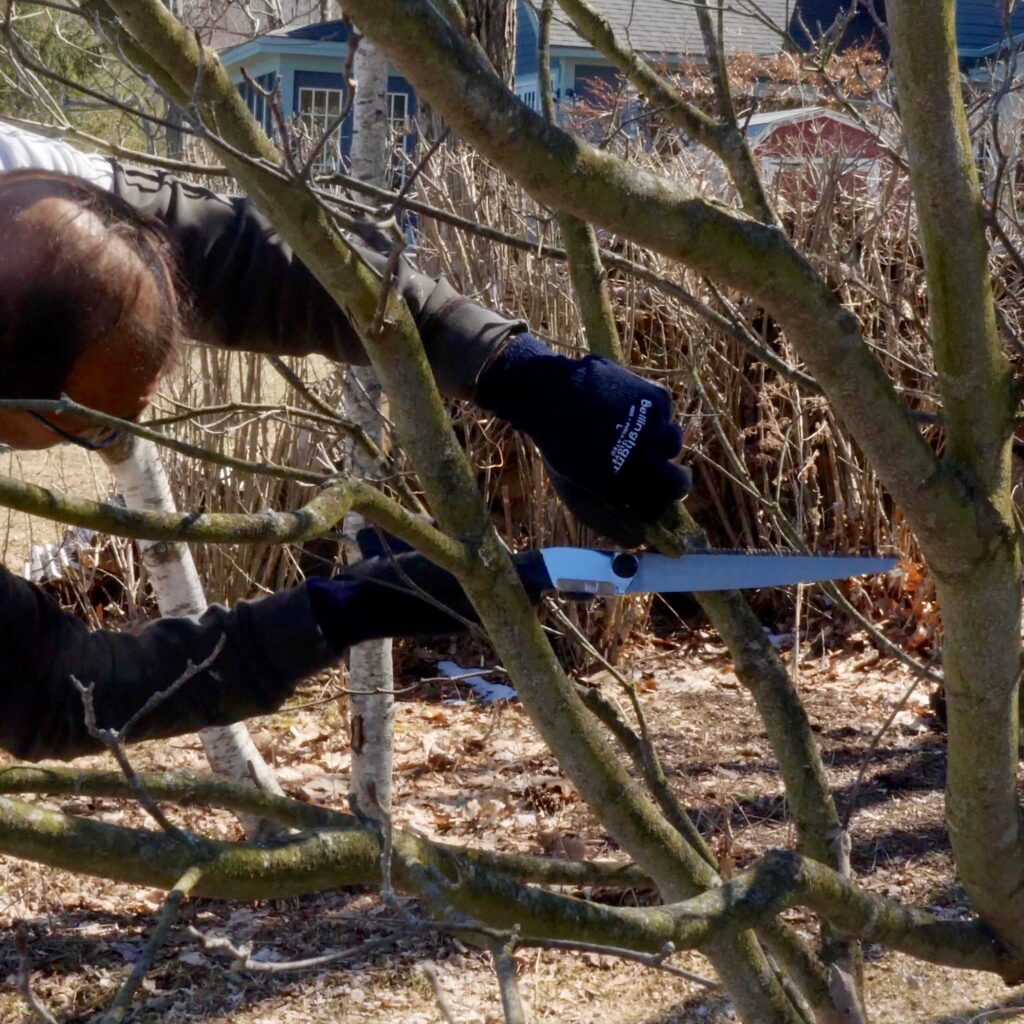
You’ll need pruners! Preferably a variety, depending on what you are pruning. We use hand-held pruners, extendable pruners, pruning saws and also extendable pruning saws. The hand-held snippers provide the most control, and are highly recommended, however you sometimes need the help of extendable pruners for trees to snip any branches out of reach.
We use saws for removing large branches and nubs that our snips just can’t get.
Tips!
- KEEP CLEAN! This is serious. If you don't take a minute to clean your pruners, you could transmit fungus to your precious trees (which can be deadly 😩)
- STAY SHARP! Just like we want clean pruners, we want nice clean CUTS too.
- BE PATIENT! We say, "Think twice, cut once", for good reason. Take your time, and step back OFTEN to view how your cuts are looking as you go.
Making the Cut
Scary for first-timers, we know! But stay confident, go slow, and just use common sense – you GOT this! Here’s the biggest things to look for when you are pruning trees:
- Remove anything dead. This is a hazard waiting to happen, so definitely take out ANY dead material.
- Remove rubbing or competing branches. Looking at your tree, you may notice certain branches intersecting... even TOUCHING. Decide which branch it makes more sense to keep, and snip the other out of its way!
- Shape it how it works for you and your garden. Yes, there is some personal taste or needs that come into it... perhaps your tree has gotten too big, maybe it's grown too lop-sided, or maybe it's interfering with neighboring plantings and needs to be tamed.
Pruning Your Shrubs
Your shrubs can generally take a pretty good chop. Your goal here is mainly shaping, and of course always removing any dead plant material. You can make some strategic cuts to give your shrub some breathing room… think of opening it up so more of it can see the sun.
Check out our example here, where we are pruning a hydrangea.
More Tips!
- DON'T leave nubs! Just don't do it! It's sloppy and they get in the way. Instead, snip or saw off any cuts as close as possible to the tree.
- You ideally don't want to prune in the rain. This could increase the risk of spreading a fungus. Better safe than sorry!
- Finally, have fun with it! Practice makes perfect.
